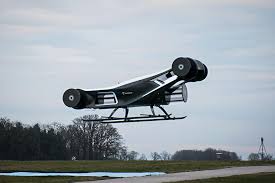
Breaking News
6.5x55 Swedish vs. 6.5 Creedmoor: The New 6.5mm Hotness
Best 7mm PRC Ammo: Hunting and Long-Distance Target Shooting
 Christmas Truce of 1914, World War I - For Sharing, For Peace
Christmas Truce of 1914, World War I - For Sharing, For Peace
Top Tech News
 EngineAI T800: Born to Disrupt! #EngineAI #robotics #newtechnology #newproduct
EngineAI T800: Born to Disrupt! #EngineAI #robotics #newtechnology #newproduct
 This Silicon Anode Breakthrough Could Mark A Turning Point For EV Batteries [Update]
This Silicon Anode Breakthrough Could Mark A Turning Point For EV Batteries [Update]
 Travel gadget promises to dry and iron your clothes – totally hands-free
Travel gadget promises to dry and iron your clothes – totally hands-free
 Perfect Aircrete, Kitchen Ingredients.
Perfect Aircrete, Kitchen Ingredients.
 Futuristic pixel-raising display lets you feel what's onscreen
Futuristic pixel-raising display lets you feel what's onscreen
 Cutting-Edge Facility Generates Pure Water and Hydrogen Fuel from Seawater for Mere Pennies
Cutting-Edge Facility Generates Pure Water and Hydrogen Fuel from Seawater for Mere Pennies
 This tiny dev board is packed with features for ambitious makers
This tiny dev board is packed with features for ambitious makers
 Scientists Discover Gel to Regrow Tooth Enamel
Scientists Discover Gel to Regrow Tooth Enamel
 Vitamin C and Dandelion Root Killing Cancer Cells -- as Former CDC Director Calls for COVID-19...
Vitamin C and Dandelion Root Killing Cancer Cells -- as Former CDC Director Calls for COVID-19...
 Galactic Brain: US firm plans space-based data centers, power grid to challenge China
Galactic Brain: US firm plans space-based data centers, power grid to challenge China
Barrel-rotor flying car prototype begins flight testing

The Austrian-based Cyclotech team has been working on commercializing its wacky-looking barrel rotors for a long time now – we first encountered these guys back in 2011 under the name D-Dalus. But the central technology here is both fascinating and a potentially big advantage in these early days of electric vertical takeoff aircraft.
How does it work? Well, each propulsion barrel is set to spin at a constant rate, and the "walls" of the barrel are made up of tilting airfoil blades in an arrangement best known as a Voith-Schneider Propeller.
In much the same way as a helicopter adjusts individual blade pitch constantly as they travel around the central hub, the blades in the Cyclorotors are constantly adjusted as the barrels spin. It even uses a similar arrangement to a helicopter's swashplate – a mechanical design that uses a tilting disc to ensure that each blade is perfectly tuned to tilt into the airflow at the perfect point in its rotation then tilt back out again.
The upshot is that you can super-quickly vector the thrust the Cyclorotor produces, with 360-degree freedom – and when you're talking about VTOL aircraft that need to adjust thrust across multiple propulsion units near-instantaneously in order to balance against wind gusts in a hover, the Cyclorotors solve a problem. Regular propellers need time to spin up to increase their thrust, and while electric motors deliver strong torque on demand, they can't respond as quickly as Cyclotech's blade tilt adjustments.
They also offer, shall we say, at least a different risk profile when it comes to birds, bystanders and other foreign objects. I'm not sure I'd love my arm going through one any more than I would with a propeller, but I can see how the packaging might make them a little less intimidating on takeoff, and they certainly make for a compact and futuristic-looking aircraft.
The prototype flown yesterday – known as "Blackbird" – was put together with impressive speed, going from concept to first flight in 11 months. It runs a Cyclorotor at each corner, much like a quadcopter drone – but adds a pair of barrels under the front and rear of the aircraft that are mounted at right angles. These will kick in some additional vertical thrust and add redundancy in case of failure – but they also give Blackbird the ability to add a sideways or twisting component of thrust for maneuvering. It might be a comfier ride than some of the competition.

 The State's Last Stand
The State's Last Stand


